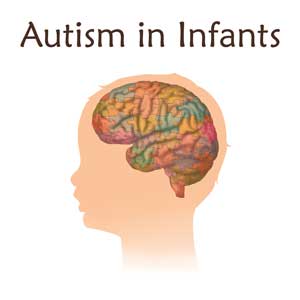Study attempts to identify at-risk babies for autism treatment
 Babies who are at risk of developing autism have better outcomes if they are identified early and given intensive treatment. That’s the premise of the Infant Sibling Project, spearheaded by Rebecca MacDonald, Ph.D., BCBA-D, director of that initiative at The New England Center for Children in Southborough, Mass.
Babies who are at risk of developing autism have better outcomes if they are identified early and given intensive treatment. That’s the premise of the Infant Sibling Project, spearheaded by Rebecca MacDonald, Ph.D., BCBA-D, director of that initiative at The New England Center for Children in Southborough, Mass.
MacDonald explained that her work attempts to replicate and expand research by Graupner and Sallows of the Wisconsin Early Autism Project in 2017. That project identified 60 siblings of children who already had an autism diagnosis. Researchers studied the babies, who were up to six months old, and conducted bi-weekly developmental screenings, discovering that 14 babies were symptomatic. Treatment started immediately.
To date, the Mass. study currently has 25 babies, with four not born yet, according to MacDonald.
While she continues to look for infant siblings of children with autism through the end of this year, the researcher said her work involves going into the home on a weekly basis and assessing the babies using a developmental screening tool.
She also videotapes every session and trains parents.
“We look for any kind of developmental deviation and if we see anything, we begin working on it right away,” MacDonald said.
One example is eye contact. Children with autism have bad eye contact. So, if the baby is eye contact avoidant, meaning he arches his head and looks away as the therapist gets closer, the idea is to teach that skill.
“We make it fun to look at us, the way you would with a baby by tickling, kissing, etc. And we interact in this social way to make sure we get that skill to occur,” MacDonald said.
Another skill they look for is having the babies respond to sound out of sight. Existing studies say that infants can respond at birth during that situation.
“A number of the babies aren’t doing that so we are teaching them…If you hear a sound to your right or left and can’t see where it is from, you should orient to that sound,” she noted.
Once a baby is identified as symptomatic, treatment begins with Applied Behavior Analysis therapists working one-on-one for 15-20 hours per week using an adapted treatment including a combination of ABA and developmental models like the Carolina Curriculum and Early Start Denver Model.
The parents and siblings are present during the visits, which MacDonald said will continue through age two. If the baby is fine, the tracking will last three or four weeks.
MacDonald said that the families are receptive to the program, especially because they already have children with the diagnosis.
“It’s scary for them if I notice something and say, `let’s work on this’ because they know what can happen if the child does not make progress.”
Working with the babies can be challenging for obvious reasons. MacDonald said that she needs to see the baby when she is alert, aware, and in a good mood. They are willing to take nursing breaks or come back at another time if the baby is too tired or otherwise not in “optimal” condition.
The researcher hopes to ideally have five staff members some day but for now, is working with two. She’s identified five babies as displaying symptoms and noted that one eight-week-old is responding well to the intervention but “is not out of the woods yet.”
Ultimately, she would like to develop curriculum and add to the screening tool that is available to psychologists and pediatricians so it can be adapted for very young babies.
“I don’t know what will happen,” MacDonald added, about her goal of replicating the findings of the Wisconsin study. “There’s a 20 percent chance that a kid with an autism diagnosis will have a sibling with it as well. Parents are concerned.”
She emphasized that this research is not about “playing with children…We look at specific symptoms, we teach them in a specific way and we monitor their progress.”
MacDonald added, “By initiating treatment as soon as deficits are detected, under six months of age, we may increase the likelihood that these babies will not be diagnosed with autism by age three.”
